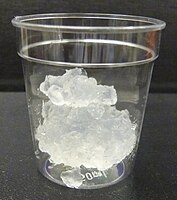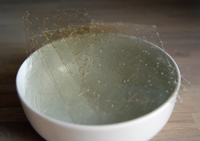
Status and future scope of plant-based green hydrogels in biomedical engineering
Sign Up to like & getrecommendations! Published in 2019 at "Applied Materials Today"
DOI: 10.1016/j.apmt.2019.04.010
Abstract: Abstract Hydrogels are the most iconic class of soft materials, and since their first report in the literature, they have attracted the attention of uncountable researchers. Over the past two decades, hydrogels have become smart… read more here.
Keywords: status; plant based; hydrogels biomedical; biomedical engineering ... See more keywords

Engineering nanocellulose hydrogels for biomedical applications.
Sign Up to like & getrecommendations! Published in 2019 at "Advances in colloid and interface science"
DOI: 10.1016/j.cis.2019.03.002
Abstract: Nanocellulose hydrogels are highly hydrated porous cellulosic soft materials with good mechanical properties. These cellulose-based gels can be produced from bacterial or plant cellulose nanofibrils, which are hydrophilic, renewable, biodegradable and biocompatible. Nanocellulose, whether fibrils… read more here.
Keywords: hydrogels biomedical; engineering nanocellulose; nanocellulose hydrogels; biomedical applications ... See more keywords

Biodegradable and Injectable Hydrogels in Biomedical Applications.
Sign Up to like & getrecommendations! Published in 2022 at "Biomacromolecules"
DOI: 10.1021/acs.biomac.1c01552
Abstract: Injectable hydrogels are a unique class of hydrogels that are formed upon injection into living bodies. They possess features of typical hydrogels such as softness, 3D network structures, large contents of water, the ability to… read more here.
Keywords: biomedical applications; hydrogels biomedical; biodegradable injectable; injectable hydrogels ... See more keywords

Advance of Electroconductive Hydrogels for Biomedical Applications in Orthopedics
Sign Up to like & getrecommendations! Published in 2021 at "Advances in Materials Science and Engineering"
DOI: 10.1155/2021/6668209
Abstract: Electroconductive hydrogels (EHs) are promising composite biomaterials of hydrogels and conductive electroactive polymers, incorporating bionic physicochemical properties of hydrogels and conductivity, electrochemistry, and electrical stimulation (ES) responsiveness of conductive electroactive polymers. The biomedical domain has… read more here.
Keywords: ehs application; hydrogels biomedical; electroconductive hydrogels; advance electroconductive ... See more keywords

Photothermal nanohybrid hydrogels for biomedical applications
Sign Up to like & getrecommendations! Published in 2022 at "Frontiers in Bioengineering and Biotechnology"
DOI: 10.3389/fbioe.2022.1066617
Abstract: In the past decades, diseases such as wound infection, cancer, bone defect and osteoarthritis have constantly threatened the public health. However, the traditional treatment has many insufficiencies, such as high cost, easy recurrence and high… read more here.
Keywords: hydrogels biomedical; drug release; photothermal nanohybrid; drug ... See more keywords

Nafcillin-Loaded Photocrosslinkable Nanocomposite Hydrogels for Biomedical Applications
Sign Up to like & getrecommendations! Published in 2023 at "Pharmaceutics"
DOI: 10.3390/pharmaceutics15061588
Abstract: Skin infections are frequently treated via intravenous or oral administration of antibiotics, which can lead to serious adverse effects and may sometimes contribute to the proliferation of resistant bacterial strains. Skin represents a convenient pathway… read more here.
Keywords: nanocomposite hydrogels; photocrosslinkable nanocomposite; hydrogels biomedical; microscopy ... See more keywords

Poly(N-isopropylacrylamide)-Based Thermoresponsive Composite Hydrogels for Biomedical Applications
Sign Up to like & getrecommendations! Published in 2020 at "Polymers"
DOI: 10.3390/polym12030580
Abstract: Poly(N-isopropylacrylamide) (PNIPAM)-based thermosensitive hydrogels demonstrate great potential in biomedical applications. However, they have inherent drawbacks such as low mechanical strength, limited drug loading capacity and low biodegradability. Formulating PNIPAM with other functional components to form… read more here.
Keywords: pnipam based; isopropylacrylamide based; poly isopropylacrylamide; hydrogels biomedical ... See more keywords